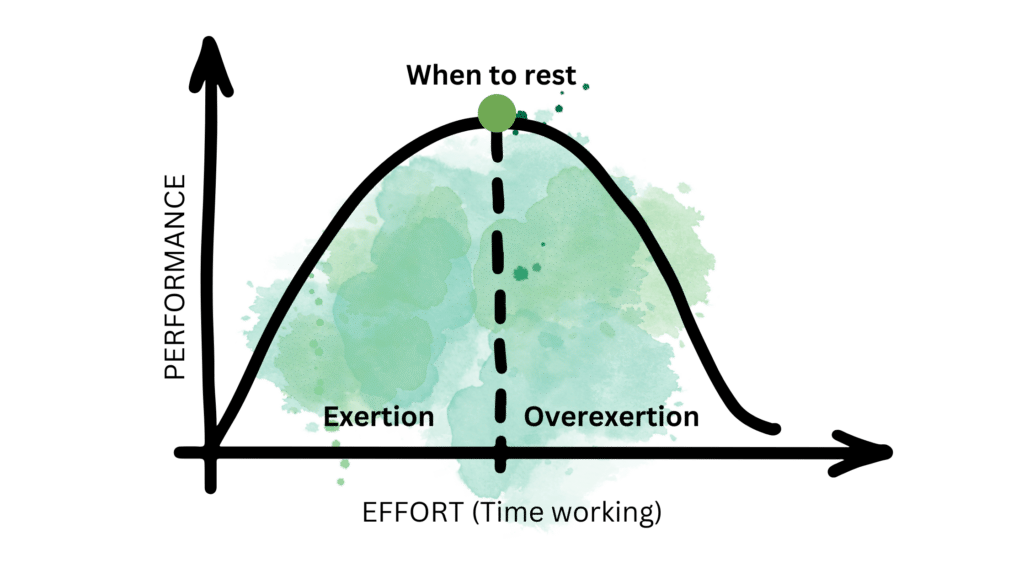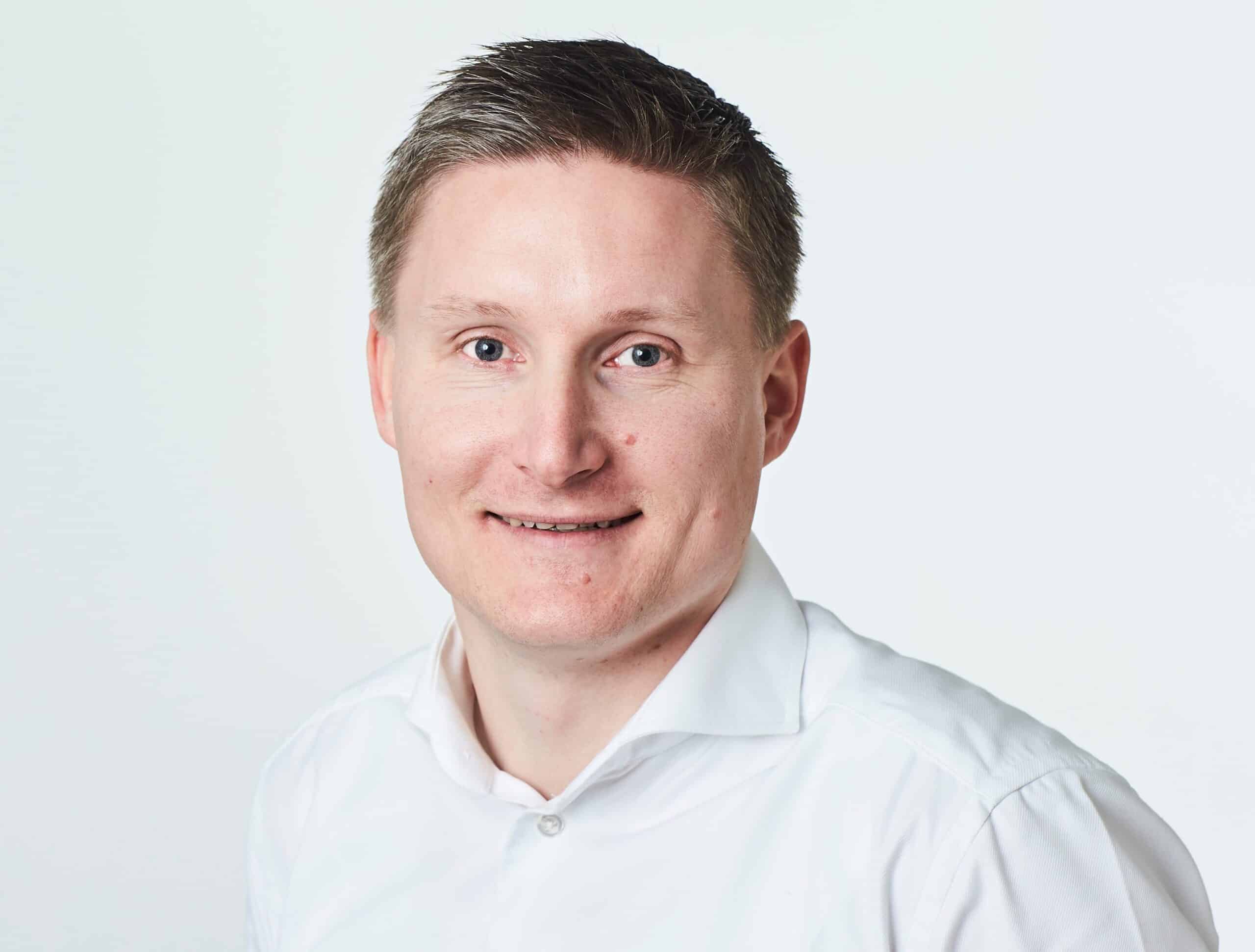Human high performance is a delicate and holistic balance between effective goal-setting, motivation, effort, physiology, rest, recovery, nutrition, emotional and mental states, stages of team development (forming, storming, norming, performing, adjourning), technical skill levels and well-being.
→ High performance is cyclical, not exponential 🙂
A high performance culture is a journey, not a destination.
In this blog article, I will discuss how you as a leader, team and professional can better create healthy high performance by balancing your own and your team’s effort to elevate your performance and well-being.
The Yerkes-Dodson law of human performance and stress.
Many leaders still believe that peak performance is all about “maximum effort = maximum results”, which is an outdated way of thinking that doesn’t work that way[1]. Post-COVID-19 there has though been an increased focus on physical and mental well-being in many organizations, at least on the surface, due to increased stress-levels, digital and mental fatigue and burnout across the globe.
However, globally fatigue, burnout and unhealthy stress are still on the rise.
That means that we have got something wrong.
It may be that the organizational or corporate stories and beliefs about high performance are flawed.
From my military training, I remember how we were introduced to what is called battle fatigue or combat stress, when soldiers undergo battle or combat for extended periods of time leading to high stress levels and fatigue. Those high stress periods were replaced by periods of rest, recovery and replenishment of energy from something to eat. So, even in high-risk, high-pressure jobs with the example of soldiers in military services, mechanisms are in place to ensure rest and recovery.
I sense that many organizations, despite good and positive intentions about well-being, do struggle to get the optimal performance balance right. That is sometimes due to contradicting organizational dynamics, short-term focus, rewards systems, business contexts and the often difficult behavior changes and strong role modeling needed by leadership.
It is however possible, but challenging.
Research dating back to 1908, known as the “Yerkes-Dodson law”, suggests that performance increases with physiological or mental arousal (stress) to a certain level[2,3]. When stress-levels or pressure become to high it impairs performance, so it decreases as shown in the human performance bell curve below[2,3].

In her great Harvard Business Review article, Francesca Gino (2016) describes how the shape of the bell curve will vary depending on the complexity of the work task and familiarity with the task[3]. Or put in different terms, different tasks will require different levels of arousal (stress) for optimal performance[3].
So, difficult, new and unfamiliar tasks will require lower stress levels to facilitate concentration and create interest[3]. In contrast, you may perform tasks better that demand stamina and persistence with higher stress-levels to bring and increase motivation[3].
We can see that from the above bell curve as the area of stretch tasks, where you are still able to stay focused and energized.
Too low arousal (stress) as shown in the bell curve will eventually lead to boredom, perhaps even frustration, because the tasks are not challenging enough leading to lower motivation levels.
Too high levels of arousal (stress) can lead to strain, fatigue, exhaustion or eventually burnout and that will be unhealthy to us and it will impair our performance.
So what is then the sweet spot for high performance and well-being?
Greg McKeown (2023) recently wrote a great Harvard Business Review article where he argues that leaders should change their mindset about what high performance really is about[1]. It’s not about maximum effort to deliver maximum output and results, but rather about optimal effort[1].
It is a different perception, which is counterintuitive, that less effort can lead to more success[1].
Now, let’s explore what optimal effort is all about and how you can foster that.
How to set the optimal exertion level for high performance.
As we learned above from the bell curve about human performance and arousal (stress) a moderate stress-level seem to be right for creating higher performance[2,3]. In the below bell curve adapted from McKeown (2021, 2023), there is a point when the effort spent working moves from exertion to overexertion and fatigue, which again leads to a turning point in performance[1,4].
This is a point for when to rest.

Therefore we need to balance both too low effort and stress levels, that can affect well-being, engagement and motivation as well as too high effort and overexertion to reach the sweet spot of optimal effort and thereby optimal, healthy high performance.
Greg McKeown (2023) argues that research shows that what actually works to build that top performance is the 85% rule that to reach maximum performance you don’t need to operate at 100% effort all of the time, but rather operate at an 85% optimal effort level[1,2,4].
And here we are talking about the perceived effort by the individual.
This is very counterintuitive for many people and I recognize from myself that when I become extremely (too) ambitious to achieve a goal or outcome, my own automatic reaction is to put in even more effort, more effort, more effort. For me it leads to becoming tired and fatigued.
So, when you have employees already performing at high or top level, sometimes the role of you as a leader is to help them navigate that bell curve of exertion and effort better. You can help them metaphorically “take their foot off the gas”, just a bit so they work a little below their perceived maximum capacity[1].
As we can see from the two bell curves, the high performance comes from maintaining the 85% perceived effort level, so keeping the team at 85% capacity can lead to success.
If we look towards the “FLOW” theory by Csikszentmihalyi (1991), it complements well this balance for optimal experiences and performance. The flow theory suggests that when you are so focused and fully immersed in an activity or task where your skill levels are perfectly balanced to the challenge of the activity or task, you experience an optimal state of experience or performance called flow[5]. It’s kind of like a feeling and state of focused energy where you effortlessly perform an activity successfully. Some characterize it similar to what we know from the so-called Runner’s High. That euforic state when you effortlessly run in a focused flow.
So, how can you foster this 85% effort mindset as a leader, team and professional?
Let’s look into that in the next part.
12 suggestions on how to foster an 85% optimal effort mindset.
Here’s 12 suggestions from Greg McKeown’s article and further valuable add-ons:
- Align your leadership team on building a healthy high-performance culture by:
– Prioritizing healthy high performance strategically
– Establishing psychological safety and trust as a foundation
– Ensuring alignment in role modeling, communication, and meeting structures - As a leader, demonstrate the right ways of working by[1,3]:
– Setting your intensity level to 85% effort to show employees that excessive stress is not necessary
– Avoiding late-night emails when you have communicated to the team not to work late
– Recognizing that employees look to their leader for work expectations and behavior - Establish designated “done for the day” time by[1]:
– Encouraging employees to avoid staying late to allow for rest and freshness the next day
– Acknowledging that hybrid work needs clearer boundaries between personal and professional spheres - Ask for a little less than perceived maximum capacity from employees (i.e. 85% optimal effort)[1,3]
- Ask high performers of the team “how am I making work more stressful than it needs to be?”[1]:
– Gain clarity on areas for improvement in the work environment - Encourage decisions that are approximately 85% right[1]:
– When making team decisions, aim for reasonably accurate choices to alleviate pressure - Be mindful of your framing and language usage to avoid high-pressure situations[1]:
– Remove urgent terms like ASAP, NEED or URGENT to reduce pressure
– Foster open communication about deadlines, reasons, benefits, and progress - End meetings 10 minutes early to prevent exhaustion[1]:
– Incorporate short breaks between meetings and throughout the day
– Ensure meetings have clear purposes and agendas - Increase your circle of influence to proactively focus on what you can affect[4]:
– Focus on aspects of your work, where you can make choices (choose one task over another etc.)
– Read more here about the Circle of Influence - Find ways to be more authentic at work[4]:
– A strong foundation of psychological safety and trust is fundamental to be able to be authentic at work
– Research suggests that inauthenticity at work negatively impacts performance and stress levels - Regulate and adapt your optimal emotional and mental states by[6]:
– Being aware of your physiology, including bodily reactions, sleep, rest, and nutrition
– Being conscious of your language, both inner self-talk and how you communicate with others
– Being aware of your beliefs and focus (what you believe to be true and where you direct your attention)
– Read more about the 3-part triad to create optimal emotional and mental states - Use pre-performance routines and rituals[4]:
– Known from sports to improve attention, execution and emotional stability and confidence
Now, I am curious to hear your stories on optimal effort and high performance – Please share in the comments.
Whenever you are ready, there are at least 3 ways, I can help you:
- The Transition Coaching Programme:
Transition to your most aspired future and better navigate your personal life or career transitions, e.g. to your new professional role, taking on a new leadership role, being part of a newly established team, so you achieve positive life-shifts, growth and development → (3 or 6-week programme). - The ELEVATE: High Performance Coaching Programme:
Transform your life by achieving your most incredible dreams, goals or outcomes through enhancing your well-being and performance in your personal life, educational and work domains → (12-week programme). - The Leadership Coaching Programme:
Realize your full leadership potential and become a much more impactful leader, who drives healthy high performance and well-being through others or your leaders → (3 or 6-month programme).
References.
[1]McKeown, G. (2023) To Build a Top Perming Team, Ask for 85% Effort, Harvard Business Review. Available at: Organizational Decision Making (hbr.org). (Accessed 15 June 2023).
[2]Yerkes, R. M. and Dodson, J. D. (1908) The Relation of Strenght of Stimulus to Rapidity of Habit Formation, Journal of Comparative Neurology & Psychology 18(5): pp. 459-482.
[3]Gino, F. (2016) Are You Too Stressed to Be Productive? Or Not Stressed Enough?, Harvard Business Review. Available at: Stress Management (hbr.org). (Accessed 28 May 2023).
[4]McKeown, G. (2021) Effortless: Make It Easier to Do What Matters Most, Penguin Random House, Dublin, pp. 95-98.
[5]Csikszentmihalyi, M. (1991) Flow: The Psychology of Optimal Experience, The Academy of Management Review 16(3): 636-640.
[6]Manning, S. (2006) Coaching: Det handler om at stille de rigtige spørgsmål, Aschehoug Dansk Forlag, Copenhagen: pp. 59-86.
(Photo Credit: Paul Pastourmatzis).

